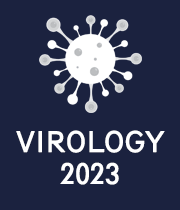Title : MiRNA expression signatures induced by chicken astrovirus infection in chickens
Abstract:
Non-coding RNAs have superior regulatory functions involved in the recognition of specific sequences within the genome. A special role in the large family of non-coding RNAs has been attributed to the short 19-25 nucleotide microRNA (miRNA) found in animals including human and poultry. miRNAs have emerged as a class of crucial regulators for gene expression and are involved in the regulation of virus defence and immunological processes.
Astrovirus infections pose a significant problem in the poultry industry, leading to multiple adverse effects such as a decreased egg production, breeding disorders, poor weight gain, and even increased mortality. The commonly observed chicken astrovirus (CAstV) was recently reported to be responsible for the “white chicks syndrome” associated with an increased embryo/chick mortality. CAstV-mediated pathogenesis in chickens occurs due to complex interactions between the infectious pathogen and the immune system. Many aspects of CAstV–chicken interactions remain unclear, and there is no information available regarding possible changes in microRNAs (miRNAs) expression in the chicken spleen in response to CAstV infection in chickens.
The objective of this study was to identify miRNAs associated with CAstV infection in chicken spleens. By comparing these data to healthy chickens, a total of 58 differentially expressed (DE) miRNAs were identified (19 downregulated and 39 upregulated). The bioinformatics prediction of target genes of differentially expressed miRNAs using miRDB identified 403 targets for miRNAs. The predicted target genes were used for Gene Ontology (GO) analysis using DAVID 8.6. and showed many significant terms to be enriched. These terms included binding activities, apoptosis and transcription regulation, and cell proliferation. Functional pathway analysis of KEGG database showed that the predicted targets of these miRNAs were significantly enriched in several pathways including MAPK signaling pathway, Gap junction, Regulation of actin cytoskeleton, Adrenergic signaling in cardiomyocytes, Phosphatidylinositol signaling system, mTOR signaling pathway and ErbB signaling pathway.
What will audience learn from your presentation?
(Try to list 3-5 specific items)
- Our study provided broad insight into the CAstV-induced host response and a basis for further studies that may clarify the interactions between virus and host. It provided a global analysis of host miRNA changes that occur during CAstV infection in vivo and a strong basis for further studies.
- We demonstrated that during CAstV infection, many host miRNAs were differentially regulated, supporting the hypothesis that certain miRNAs might be essential in the host-pathogen interactions. These results are significant for the study of immune responses to infection with CAstV mediated by miRNAs as well as the interaction between the chicken host and the virus. These findings have important implications for the study of the miRNA-mediated immune response to CAstV infection, but also more generally for host-virus interactions.


